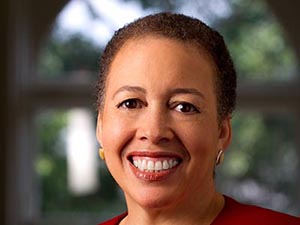THE BACK STORY—APOCALYPSE NOW: HOW VIRAL FEAR DISTORTS OUR WORLDVIEW BY DAHLIA SCHWEITZER ’98

In 1995, I saw a movie called Safe at an art house theater in downtown Washington, D.C. Written and directed by Todd Haynes, the film left me speechless. As the enigmatic Carol White, the normally radiant Julianne Moore becomes whiter and fainter as the film progresses—a victim of a disease no one can diagnose, much less cure. There is no question that Safe is significant; not only as a work of cinema, but also as an accurate reflection of a particular moment in American history, and a prophetic statement about how, in an identity-based culture, diseases would become another middle-class way to categorize ourselves, manage our problems, file our grievances, and find our communities.
As the years passed, and AIDS would share the media spotlight with SARS, Ebola, and Avian flu, I grew fascinated not only with the fear that these viruses could stir up, but also with the ways that they changed fundamental social interaction. Suddenly, “personal space” could mean the difference between life and death—or so the media headlines would have you believe. The healthy-looking person beside you could kill you. The plane you are about to board could be flying hundreds of viruses around the world.
It was not only that viruses impacted our interpersonal interactions, but that they impacted our understanding of the world, talking points for politicians as much as box office fodder for Hollywood.
Fear is traditionally associated with highly contagious disease, and much like contagious disease, it can also spread like wildfire. Government organizations such as the Centers for Disease Control (CDC), journalists, and Hollywood capitalize on these fears for attention, power, and money. Even though concerns about microbial enemies are not new, since the 1990s they—often described with the term “emerging viruses” have appeared both as a coherent concept and as a deadly threat in various forms of media.
In particular, the way infectious viruses are appropriated by Hollywood may provide the greatest insight about the viruses themselves and the world we live in. It can take years to bring a film to the screen, and the synchronicity of outbreak narratives around 1995, much like the synchronicity of bioterrorist narratives during the start of the 21st century or the current success of zombies, are examples of cultural ideas developing in parallel, drawing from the zeitgeist to explore similar themes. But while the viruses may have changed, the basic template of the outbreak narrative stays the same, evolving only to reflect different modes of transmission, a heightened awareness of how easily diseases can spread around the world, and evolutions in the source of the current fear: from Africa to Asia to the Middle East.
In particular, fear of Ebola demonstrates how certain responses are disproportionately shaped and intensified by the government and the media. It is not only how much coverage these threats get—in both print and online media, in both fiction and nonfiction formats—that makes them cause so much fear, but it is also the specific information provided and the way the risk is framed (often in hyperbolic fashion). Additionally, articles about viruses often set up an “us versus them” trope that continues throughout the fictional outbreak narrative, stigmatizing the “primitive and dangerous” other so threatening to those in the developed world.
The outbreak narrative has become a parable for our fears, evolving to depict our fears of contagion, of the world, of monsters, and of becoming a monster. It is not only that it is a template that adapts with changing cultural and social anxieties, but that it is a guidepost that tells us where we are going and where we have been. How provincial we were back in 1995, when a deadly virus from Africa only threatened the small town of Cedar Creek, when viruses could forge romances and bring lovers together! In 2011, the world was a much colder place, full of isolation while still, perversely, heavily interconnected, a virus capable of spanning the world in the blink of an eye. Now, one of the highest rated basic cable shows visualizes for its viewers week after week just how brutal the future can look and how quickly we can get there.
While the impossibility of truly effective safety pervades all outbreak narratives, this fear has grown more pronounced as the impact of globalization becomes more visible. In particular, the combination of eroding barriers and rapid global communication has changed both the world and the narrative. After all, globalization does exacerbate the threat of infection, and so Hollywood narratives can easily emphasize the insecurity of boundaries, regardless of whether the infection is literal—spread via zombies or viruses—or metaphorical. Viral outbreaks make us afraid of globalization—of the encroachment of germs, bacteria, and, significantly, their carriers. Outbreak narratives feed into these anxieties, telling us not only what but whom to fear.
Viruses remain a powerful and infectious metaphor, a way to demarcate “dangerous” people, a way to draw attention to the flaws and frailties of the bonds between people and between nations, and a way to spread and construct fear. The proliferation of digital media—our ability to digest all the information, all the time—makes this fear even more infectious. The power of panic—as well as the fear of infection and whatever latent racism accompanies it—can now be multiplied the world over. While healthcare and personal immunity may be our only recourse against threatening microbes, critical thinking and careful observation are our only recourse against the fear.
Dahlia Schweitzer is an adjunct professor at the Art Center College of Design in Pasadena, California. She is the author of Going Viral: Zombies, Viruses, and the End of the World (Rutgers University Press, 2018).



